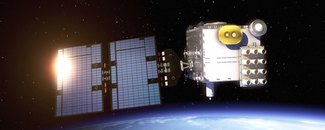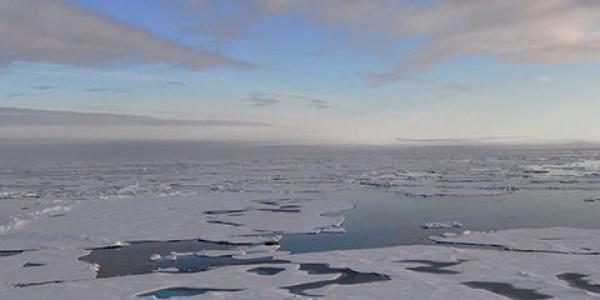Joint U.S.-Taiwan mission collects information on atmospheric conditions and space weather

A half-dozen kitchen-stove-sized microsatellites—known collectively as COSMIC-2, for Constellation Observing System for Meteorology, Ionosphere, and Climate-2—are zipping through space over the equator at 17,000 miles per hour. Launched a year ago, the satellites underwent months of testing and recently started feeding data into weather prediction models.
COSMIC-2 data will be valuable not only for the latest weather forecasts but also for long-term scientific research on climate and space weather—and that’s where NOAA NCEI plays a crucial role as the historical archive for COSMIC-2 data.
“We've got scientists in our organization, and they're interested in understanding the data itself—the contents of the data file,” says Nancy Ritchey, NCEI Archive Branch Chief. “In the Data Stewardship Division, we're interested in activities needed to preserve the data for the long term.”
By archiving the COSMIC-2 data, NCEI ensures that the information remains valuable to scientists for decades to come.
Measuring the Bend
Launched on June 25, 2019, the COSMIC-2 satellites collect information through a technique called radio occultation, which depends on the Global Positioning System (GPS). GPS satellites, operated by the U.S. Air Force, send a constant stream of signals to Earth, and these signals get distorted, or bent, as they travel through the atmosphere, depending on various conditions. COSMIC-2 instruments measure the small changes in these signals, translating that information into data on atmospheric temperature, pressure, density, and water vapor. The satellites also carry instruments that can detect solar storms.
The satellites will occupy a long-term orbiting position of about 550 km (342 miles) above Earth, also called "mission orbit.”
COSMIC-2 started contributing data to forecasting models on May 26—just in time for the 2020 Atlantic hurricane season (June 1 through November 30), which NOAA predicted would be busy. COSMIC-2 will provide more information about the moisture in and around tropical systems, which will help forecasters better predict storm development and intensification. Improved forecasts should help protect people and property in the path of storms.
International Partnership
The COSMIC-2 mission is a collaboration between NOAA and the Taiwan National Space Organization, with the satellites owned and operated by Taiwan authorities. Other partners include the U.S. Air Force and the University Corporation for Atmospheric Research (UCAR), a nonprofit research consortium of more than 115 North American colleges and universities.
Data from COSMIC-2 satellites are transmitted to a system of ground stations located in the tropics throughout the world—from Guam to Ghana to Tahiti—and from the ground stations to data-processing centers in the United States and Taiwan.
In the United States, UCAR is handling data management and production—receiving the raw satellite data, processing the information into data products, and making these products available in near-real time for use in forecasting models and space-weather monitoring.
Archiving COSMIC-2 Data
UCAR also shares the data with NCEI, which serves as the long-term historical repository.
Every week, NCEI receives raw data, processed data products, and associated metadata (i.e., data about the data). Archivists validate the records—ensuring that the files contain the data UCAR meant to send—and record information such as the size of the files and when they were received.
The files are then put into storage. Although there are plans to move NCEI’s archive to the cloud, for now the records are preserved on tape. Two copies are made: one is stored onsite at NCEI in Asheville, North Carolina, while another—known as the secure copy—is stored offsite.
Archiving involves much more than simply storing data. Think of a typical computer user who saves files on a laptop. Those records are stored, but they aren’t archived or preserved.
“For it to be preserved for future generations, somebody else needs to be able to come in and figure out what's in your files, and where they are, and find all of the other information to help them use the files that you have in an intelligent manner,” Ritchey says. “A goal of data preservation is to make it independently understandable.”
To support that goal, NCEI is preserving the COSMIC-2 source code, the software used to translate raw data into data products. Years from now, a scientist might want to reprocess the raw data in a new way. “But if they don't know how things were processed to begin with, then they don't know what changes they may want to make in this new reprocessed version,” Ritchey says. At NCEI, the source code will be waiting for them as documentation.
The archivist’s job is to ensure that future researchers will have all the information they need to understand the data and put it to work. And in data archiving, the technological terrain is constantly shifting.
“When we move to the cloud, maybe we have to take the original data and enhance it in some way in order to be cloud-ready,” Ritchey said. “That's what we mean by stewardship—it's continuing to add value to the data over time.”



